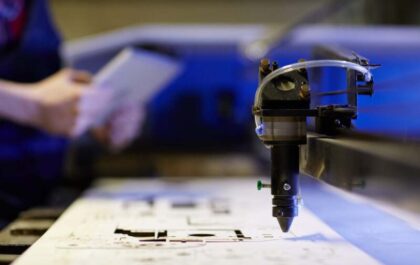Table of Contents
Introduction
Dark City and The Matrix are set in worlds whose inhabitants don’t realize they live in a virtual space. To them, everything seems tangible. However, they don’t understand that everything they see, whether it’s food, clothes, buildings, or even other people, is just pieces of structured data designed to simulate reality.
But What About Our World? Is It Virtual?
It is no secret that we perceive the world based on the senses, for according to the philosopher David Hume, all human knowledge stems from perception, not reason. We collect information by sight, smell, hearing, touch, and taste, and our brains interpret the world around us using these inputs to create an experience we call reality.
But is what we see true? Or does the fact that all this data must pass through the filter of our minds mean that the world we experience only represents what exists? On the other hand, it could mean that we all inhabit our virtual worlds all the time. And we don’t even need a computer to get there.
This idea is not new. Philosophers have debated the nature of perception and reality for hundreds of years. Part of the problem lies in our minds being not infallible. But they can be easily deceived.
For Example, delusions or hallucinations may fool us into thinking that we perceive something that is not real. A simple example is the forced perspective, according to which objects closest to the observer appear more significant than distant objects.
As a result of adequately framing the angle of view. The observer can be deceived by making him think that the person closest to the observer’s point of view is more extended than another person standing away.
If Our Minds Are So Easily Deceived, Is What We See True?
Arguments of illusion and hallucinations:
An argument stemming from illusion is a set of ideas that suggest that what we see is not valid, and we will give you a simplified version of the statement accompanied by an example:
Bob stays in a room, looking at what appears to be a blue box placed behind a glass wall. In Bob’s mind, he classified that body as having a specific shape: a TV and a particular colour: blue.
But in reality, it turns out that the box is just a piece of cardboard folded on the mirror. Which explains why it gives it the look of a box. In addition, the cartoon is white, but the focus of blue light on the comic is what gave it its blue appearance.
This Example shows that Bob thought to see an object while looking at something else. The delusional argument is that because of Bob’s inability to find a way to distinguish between what he sees and what is accurate. We can conclude that there is no way to verify that anything we see is not just an illusion. Our point of view is what some philosophers call “naïve realism.”
While this Example Seems to Oversimplify the Problem
The realist might say that without being able to get out of the human experience and objectively perceive reality, it is impossible to say what we thought represented the actual reality. It is impossible to wake up from the shared dream or get out of the matrix. It can mean that we are constantly stuck in an illusion, that our perceptions correspond to reality. And that there is no illusion in the first place. Perception and reality are one thing for us.
As we progress in creating virtual worlds in the technological sense across multiple ways, computer engineers, technologists, and psychologists design virtual environments that mimic real situations. Those environments may provide a real sense of integration. People may not think that this virtual environment is the real world. Still, they tend to learn its rules and adapt to it to start acting as if it were real, to the point of getting honest physiological reactions to virtual stimuli. However, most are still fully aware of their presence only in the simulation.
It is no secret that we are also witnessing developments in the field of augmented reality. With massive facts, we create a layer of data and interactions above the world we see around us. We can see the world around us using devices like smartphones and get additional data. An excellent example of this is the Monocle feature in the Yelp app. And as soon as you point your iPhone camera toward the shops, notes appear on the screen. And your perception of the world immediately swells.
As we find new ways to visualize and interact with the world around us based on technology. We may separate ourselves further from our reality. But we feel safe when we say we live within a hypothetical certainty.
Related posts
Featured Posts
Exploring Advanced Techniques in the Laser Engraving Machine: 3D, Texturing, and Multi-Layered Designs
Many industries have spoken for the laser engraving machine because of its results and versatility. But recently, many advancements have…
Benefits of Vitamin D
Introduction One cannot live without the benefits of vitamin D because its virtues are essential for good health. But do…


